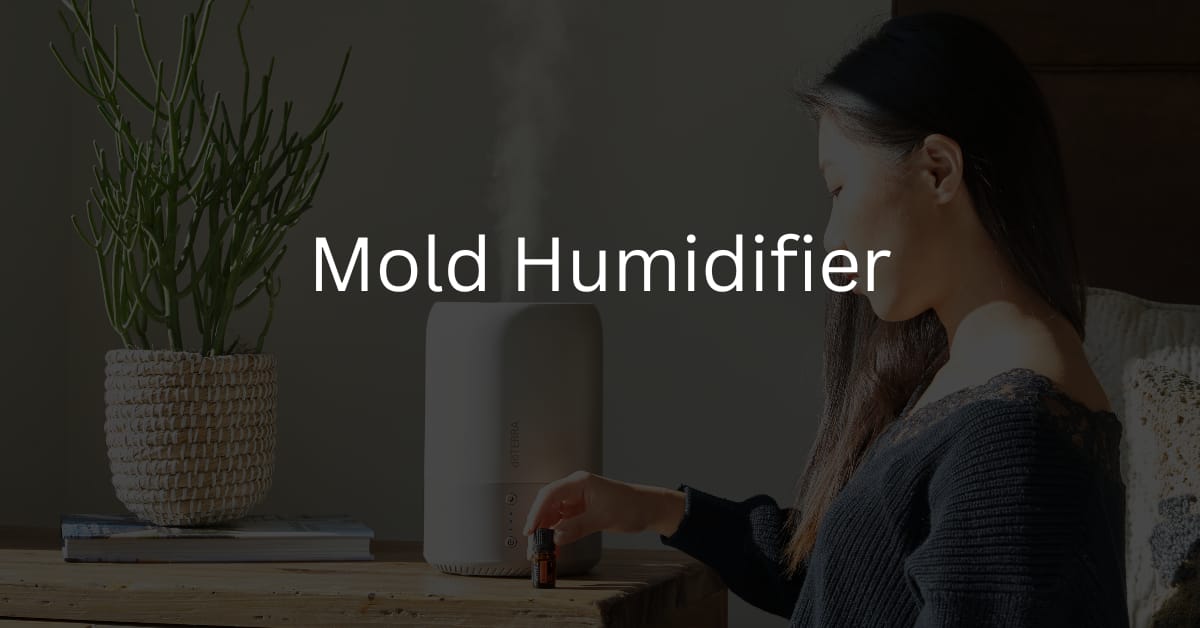Mold is a fungus that grows best in moist conditions and can grow almost anywhere. It’s not uncommon to find mold in the home, especially when there’s an excess of moisture. The presence of mold usually poses serious health risks and should be dealt with immediately.
Humidifiers are devices that add moisture to the indoor air as a way to prevent the onset of asthma, dry skin, and other related conditions. When humidifiers get contaminated with mold, they pose a serious danger to your health.
In this article, you will learn what does mold look like in a humidifier and how you can prevent it from growing inside the device.
Also Check: Best Humidifier For Dry Eyes
What is Mold?
Mold, also known as mildew, is a type of fungus of fungi that grows on various places like plants, wood, food, or any kind of other organic materials. Mold usually grows in moist warm environments, especially on food. Mold has several species that can be found in different colors.
Types of Mold
There are 3 main types of molds that are found in homes:
Allergenic: Allergenic molds are one of the most common molds that grow on the human body. These types of molds can be found on eyes, skin, and other body parts and can cause allergic reactions.
Pathogenic: The Pathogenic mold is hard to spot in a home, but it can cause various diseases.
Toxigenic: Toxigenic mold produces toxins and toxic substances that are very dangerous for the human body and can cause deadly diseases.
What Does Mold in Humidifier Look Like?
Mold usually grows in green, black, or blue-green patches or also looks like a sport or discoloration and is visible to the naked eye. The smell of mold can also be detected by sniffing it since it has a musty smell.
When you see signs of mold growth on your humidifier, you must clean it immediately. If left untreated, the growth of mold can spread to the rest of the home and pose serious health risks.
Furthermore, if you notice a black or white crusty build-up at the base of the humidifier, that’s a sign of bacteria build-up and not mold. Bacteria can also pose serious health risks and should be cleaned as soon as possible.
On top of that, if you see white, fuzzy stuff at the top of the water, you might have yeast or fungus growing inside the humidifier. Yeast and fungus are types of microorganisms that can cause skin allergies. You must clean the humidifier to get rid of the build-up.
What Causes Mold Growth in Humidifiers?
Humidifiers can attract mold because they are moist environments that allow the microorganisms to grow. Humidifiers are usually wet because of the minerals in the water that have settled at the bottom of the unit.
The humidifier’s design, especially the ones that don’t have a filter, makes it easier for mold to grow. This is because the warm and moist environment inside the humidifier is ideal for the growth of mold and bacteria. The presence of minerals and other impurities in the water further increases the chances of mold growing in humidifiers.
If you notice that there is mold growing in your humidifier, you should stop it immediately and clean the inside of the unit. If not removed, the mold can spread to the entire room and pose serious health risks.
How to Check for Mold in a Humidifier?
There are various ways to check for mold in a humidifier, and some of them are pretty easy to follow. Below are the top 3 ways to identify mold growth in a humidifier.
Inspect Visually:
The first thing you could try to identify mold in your humidifier is by inspecting it visually. You need to look for signs of mold in the water tank. If there are any black or green spots, discoloration spots, fuzzy spots, or anything that looks growing, it could be mold. If you can’t inspect it visually, you need to identify it by smelling the water.
Test Smell:
The smell test is the next step to identify mold growth in a humidifier. However, it is slightly difficult as not everything can identify it with their nose. You need to sniff inside the water tank of your humidifier, and if you find out a musty smell or if the water smells like a damp sock, there is a very high chance that there is mold inside your humidifier.
Use Black Light:
You can use a black light to verify whether there is mold inside the humidifier. This is because black light can show the presence of mold by glowing bright the spores. You can also drop a few drops of chlorine solution into the water to identify if there is mold present in the Humidifier.
How to Remove Mold from a Humidifier?
There are various ways to remove mold from a humidifier. Below are the top 3 ways to remove mold from the humidifier.
Using Bleach:
If you find that there is mold growing in the humidifier, you must clean it immediately. The best way to get rid of mold inside the humidifier is through the use of bleach. Mix a solution of water and bleach to reach a 1:1 ratio (1 teaspoon bleach in 1-gallon water) to kill the mold growing inside the humidifier.
Mold Remover:
Alternatively, you can use a commercial cleaner to remove mold from humidifiers. Make sure to clean the entire unit to get rid of the mold completely.
Other Cleaning Solutions:
You can also use a few other cleaning agents to clean the inside of the humidifier. These include a solution of water and vinegar, a solution of water and hydrogen peroxide, and a solution of water and baking soda.
How to Prevent Mold in Humidifiers?
Use Clean/Distilled Water:
The best way to prevent mold in humidifiers is by using clean water. If you have hard water, you must use distilled water to prevent minerals from forming inside the humidifier. You can use a filter to clean the water before it gets into the humidifier.
Clean the Humidifier Frequently:
You must clean the humidifier regularly to prevent the formation of mold inside the device. You must frequently change the water to prevent mold growth.
Clean or Replace Filter:
Some humidifiers are filter-free, while some humidifiers have a filter that prevents impurities from entering inside the humidifier.
If you own a humidifier with a filter, then you need to regularly clean the filter. Moreover, you should replace the filter every 3 months to prevent impurities and mold growth in the humidifier.
What Should You Use to Prevent Mold Growth?
Mold can grow not only in humidifiers but also in your home. If you leave wet dishes in your sink for a few days, mold can grow. Furthermore, it can grow from a wet towel that has been left on the floor for a few days.
In such cases, an air purifier or a dehumidifier can be used. To prevent mold growth in humidifiers, use mixed bleach water to clean them on a regular basis.
How to Prevent Pink Mold in Humidifiers?
Pink mold can grow in humidifiers if water remains on the tank base after the tank has been emptied. Pink mold in humidifiers is very simple to avoid. You must ensure that the tank is cleaned after each use.
Furthermore, if you are not using the humidifier for a few days, you must ensure that there is no water left in the tank base. Aside from that, you must ensure that the humidifier tank is not leaking.
What is the Black Thing in Humidifier?
The Black thing in your humidifier is mold which may be sitting in your humidifier since you have not cleaned it. Black mold is one of the toughest molds to remove from the tank as it sticks to the surface of the tank and doesn’t easily go away.
Black mold is also known as aspergillus, and it usually grows in warm mist humidifiers. Black mold can cause various skin and respiratory diseases, so you need to ensure that you clean the humidifier regularly.
Conclusion
To conclude, humidifiers are a breeding ground for mold. With the right conditions, these little spores can grow and thrive inside your humidifier.
Fortunately, there are some easy ways to avoid this problem. You just need to follow this guide to prevent mold growth from happening.
Hopefully, now you know “What Does Mold in Humidifier Look Like” and how you can prevent its growth. If you still have any questions, do let us know in the discussion area below.





